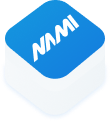
Nami SDK 


What is Nami?
Nami is on a mission to help you grow your app business using IAPs and subscriptions. Go beyond basic StoreKit infrastructure and focus on results with:
- Growing library of smart paywall templates to choose from, implemented natively using UIKit and SwiftUI
- Paywall CMS so you can make change instantly, without submitting an app update
- Experimentation engine to run paywall A/B tests so you can improve your conversion rates
- Built-in IAP & subscription management and analytics, so you don't need another solution
Nami is simple adopt while giving you the tools you need to improve revenue. Our free tier is generous, and gives you everything you need to get started. Sign up for a free account
Get started by heading over to our quick start guide
Getting the Nami Framework
Requirements
- iOS 14+, iPadOS 14+, tvOS 15+
Using SPM
- In the Xcode menu select File > Swift Packages > Add Package Dependency.
- Enter the URL https://github.com/namiml/NamiSDK-SwiftPackageManager into the box just below Choose Package Manager, and press the Next button.
- Leave the default settings of Up to Next Major and current major version number, press Next button.
- After making sure the correct application target is selected, click the Finish button.
Using CocoaPods
Add the following line to your Podfile. See the example in this repo Podfile.example.
pod "Nami", "3.1.32"
Then run the command
pod install
Add Manually
The Nami XCFramework is available via the Swift Package Manager or Cocoapods. You may also add the XCFramework manually to your project.
Note: Updating the Nami Framework Manually
When a new version of the Nami framework is released, just drag it over your old Nami framework in your application project directory - make sure to select "replace" instead of "merge". After the framework has been copied over the old one, make sure to select "Clean Build Folder" in Xcode so it properly refreshes the binary from the framework.
Configure the SDK
In your application delegate, the Nami SDK is configured and passed your unique app ID, You can find the Nami App Platform ID under the Nami Control Center's Integrations > Apple App Store section.
func application(_ application: UIApplication, didFinishLaunchingWithOptions launchOptions: [UIApplicationLaunchOptionsKey: Any]?) -> Bool {
// Configure Nami
let namiConfig = NamiConfiguration(appPlatformID: "YOUR_APP_PLATFORM_ID_GOES_HERE")
// optionally adjust the level of logging of the SDK
// .debug, .info, .warn, .error, defaults to .warn
namiConfig.logLevel = .info
Nami.configure(namiConfig: namiConfig)
return true
}
Other Resources
Release Notes
Documentation
GitHub
| link |
| Stars: 54 |
| Last commit: 3 weeks ago |
Release Notes
Full Changelog: https://github.com/namiml/nami-apple/compare/3.1.33...3.1.34
Swiftpack is being maintained by Petr Pavlik | @ptrpavlik | @swiftpackco | API | Analytics